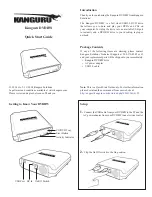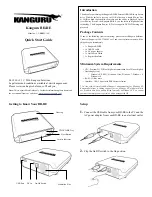
Cause
Possible Solutions
The frequency reference is too low.
• If the frequency reference is set below the frequency set in E1-09
(Minimum Output Frequency), the drive will not operate.
• Raise the frequency reference to at least the minimum output frequency.
n
Motor Stops During Acceleration or When a Load is Connected
Cause
Possible Solution
• The load is too heavy.
• The limit of motor response may be
reached during rapid acceleration. This
may be a result of improper stall
prevention or automatic torque boost
function adjustment.
Increase the acceleration time (C1-01) or reduce the motor load. Also,
consider increasing the motor size and/or drive size.
n
Motor Rotates in One Direction Only
Cause
Possible Solutions
"Reverse run prohibited" is selected. If
b1-04 (Reverse Prohibit Operation) is set
to 1 (reverse run prohibited), the drive will
not accept a reverse run command.
Set b1-04 = “0” to allow reverse run operation.
The drive prohibits reverse rotation.
• Check parameter b1-04.
• Set the drive to allow the motor to rotate in reverse (b1-04 = “0”).
A Reverse run signal has not been entered,
although 3-Wire sequence is selected.
• Make sure that one of the input terminals S3 to S5 used for the 3-Wire
sequence has been set for reverse.
n
Peripheral Devices Affected by Drive Operation
Cause
Possible Solutions
Radio frequency interference may be
generated by drive output PWM
waveform.
• Change the Carrier Frequency Selection (C6-02) to lower the carrier
frequency. This will help to reduce the amount of transistor switching
noise.
• Install an Input Noise Filter at the input power terminals.
• Install an Output Noise Filter at the motor terminals.
• Use conduit. Metal can shield electrical noise.
• Ground the drive and motor.
• Separate main circuit wiring from control wiring.
5.8 Troubleshooting without Fault Display
164
YASKAWA ELECTRIC TOEP C710606 25D YASKAWA AC Drive J1000 Installation & Start-Up Manual
















































